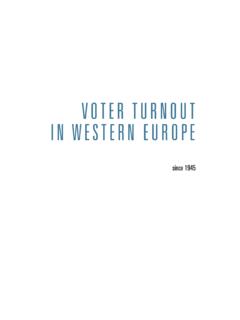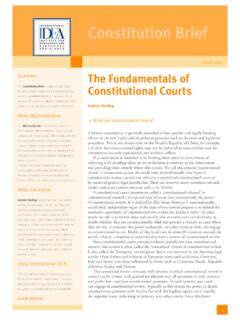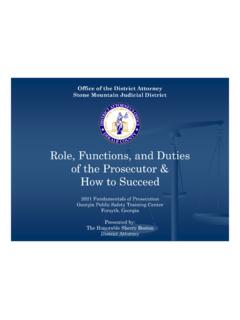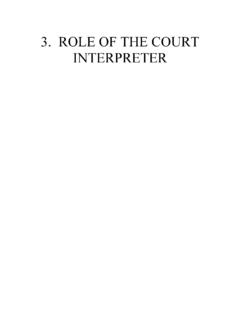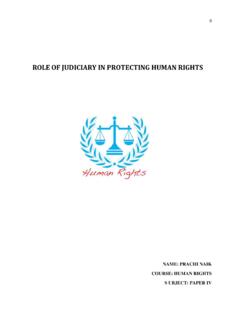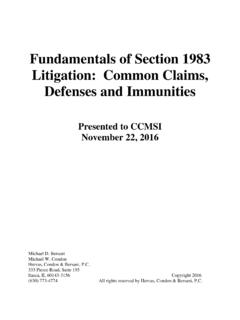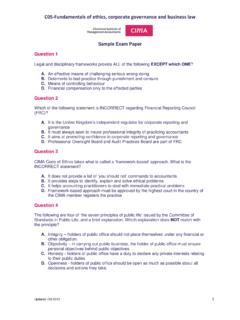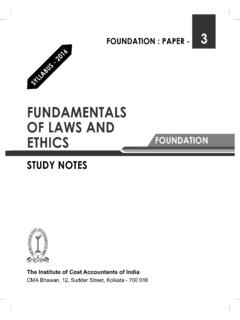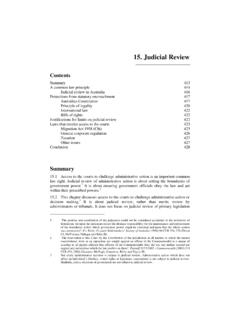Transcription of The Fundamentals of a Constitution - IDEA
1 1 Constitution BriefApril 2017 Summar yThis Constitution Brief provides basic information about the nature and functions of constitutions and is intended for use by Constitution -makers and other democratic actors and stakeholders in MyConstitution The MyConstitution project works towards a home-grown and well-informed constitutional culture as an integral part of democratic transition and sustainable peace in Myanmar. Based on demand, expert advisory services are provided to those involved in Constitution -building efforts. This series of Constitution Briefs is produced as part of this effort.
2 The MyConstitution project also provides opportunities for learning and dialogue on relevant constitutional issues based on the history of Myanmar and comparative experience. About the author Nora Hedling is a lawyer working in the area of constitutional law who previously carried out research on election law and judicial reform and co-authored the International IDEA Handbook, A Practical Guide to Constitution Building. She holds a BA from Tufts University and a Juris Doctor degree from the University of Minnesota Law School. She also earned a Master of European Law degree at Stockholm University where she was awarded the Oxford University Press Law Fundamentals of a ConstitutionNora Hedling1.
3 What is a Constitution ? A Constitution is a body of basic laws and principles that describes the general organization and operation of the state and contains fundamental principles and norms that underlie and guide all government action. Given the fundamental nature of a Constitution and its role in laying a groundwork to shape and support the state, a Constitution is usually expected to be long-standing and somewhat difficult to change or Constitution is simultaneously a legal, political, and social instrument. Legally, it enshrines human rights and creates a predictable legal landscape.
4 As a supreme or higher law, its provisions provide a framework under which all regulations, legislation, institutions, and procedures operate. It articulates the rights of citizens that institutions, procedures or legislation must not infringe, and which the state must strive to ensure. Politically, it establishes, distributes and limits governmental power and provides mechanisms for deliberating and deciding on public policy. Socially, it may reflect a shared identity or civic vision of the state, expressing commonly-held values or foundational principles. Forms of constitutionsWritten vs unwritten: Although all systems of government rely at least in part on unwritten norms, customs and practices to regulate the exercise of public power, most have at their core a written Constitution in the form of a consolidated legal document.
5 Only a small minority of countries notably the United Kingdom, New Zealand, and Israel deviate substantially from that pattern. Legal vs Political: In most countries the judicial branch is mainly responsible for interpreting and enforcing the Constitution , most notably through the ability of the courts to determine the constitutionality or unconstitutionality of laws. These constitutions are said to be legal constitutions. Some countries, including Switzerland and the Netherlands, have what are sometimes known as political constitutions, in which the legislature is primarily responsible for interpreting and upholding the Constitution .
6 2. What is a Constitution meant to do? A Constitution serves multiple purposes. Above all, it empowers public institutions and both authorises and regulates the exercise of public power. The Constitution provides a legitimate legal and political basis for proposing and enacting laws, About International IDEAThe International Institute for Democracy and Electoral Assistance (International IDEA) is an intergovernmental organization with a mission to support sustainable democracy IDEA Constitution Brief, February 2017organising public service and settling disputes. To do this, the Constitution must distribute powers, duties and responsibilities between various branches of the government (executive, legislature and judiciary) and regulate relationships between them.
7 Organizing and dispersing powers: The horizontal dimensionTypically, constitutions seek to disperse powers horizontally among multiple actors and institutions for example, between two chambers of a legislature, or between a president and a prime minister. In some cases, it may be appropriate to consider a horizontal distribution of power between civilian and military authorities, or between secular and religious institutions, or between the party-political institutions and the independent institutions such as an electoral commission or public service commission. This distribution of powers can be designed to create a system of checks and balances, to ensure no single actor or body accumulates a potentially dangerous concentration of power.
8 At the same time, however, constitutions also need to establish an effective and efficient system of government that can respond to public demands without falling into deadlock. Organising and dispersing powers: The vertical dimensionConstitutions often establish a vertical distribution of power between national or central and subnational authorities. The vertical distribution of power can provide recognition and empowerment to regions, as well as marginalized or minority groups. Taken to excess, however, it might cause inefficiencies, unnecessary duplication of effort, additional expense, or the loss of technical expertise and resources which are available only at a national level.
9 Federalism, in which the powers and duties of the different levels of government are set out in the Constitution , is one way of protecting and promoting this vertical distribution of power, although other more flexible forms of decentralisation, such as devolution and regionalism, are also available. In each case, the balance between decentralisation and centralisation has to be considered according to the history, tradition, social and political landscape, economic resources, and development needs, of each country. Expressing identity A Constitution can also be also an expression of shared values, identity or purpose.
10 In general, for a constitutions to be effective, enduring, and widely respected, it should reflect a broad consensus of agreement about these Fundamentals . A Constitution that represents and embodies only the values and identity of a particular part of society for example a dominant region, religion, class, ideology or ethnicity and that seeks to impose this upon the rest of society, is unlikely to achieve the broad consensus needed for it to function properly. It will be seen as an illegitimate instrument and will not provide an overarching framework for stable, legitimate and effective need for broad-based agreements means that, where possible, a Constitution should reflect shared values, identity and purposes of society.


